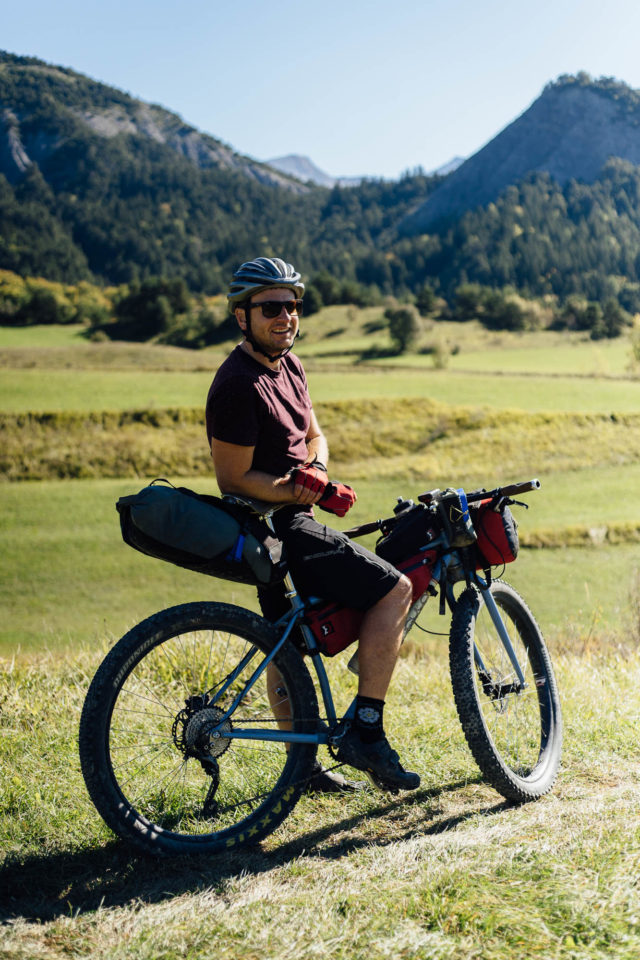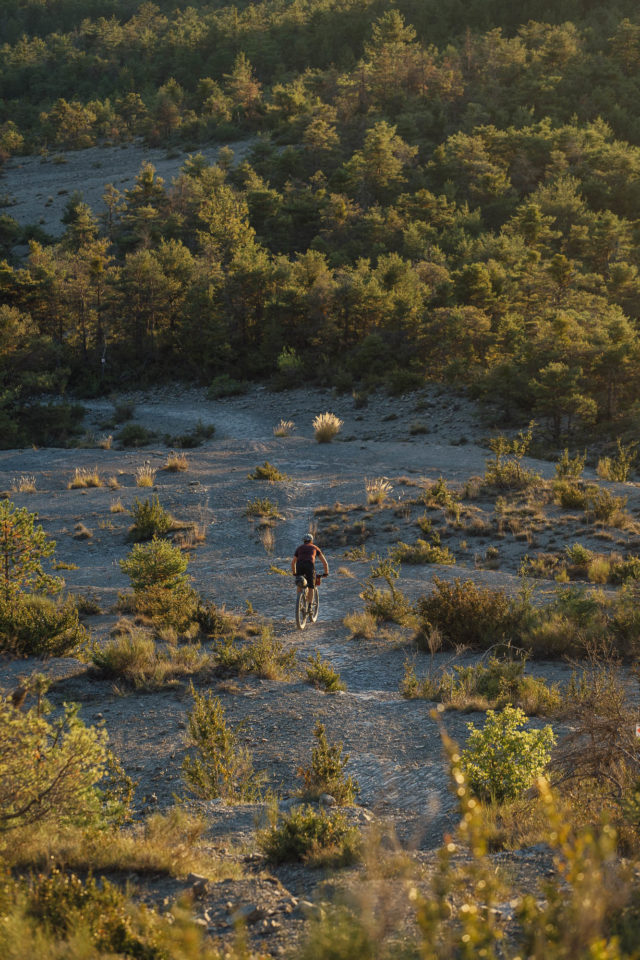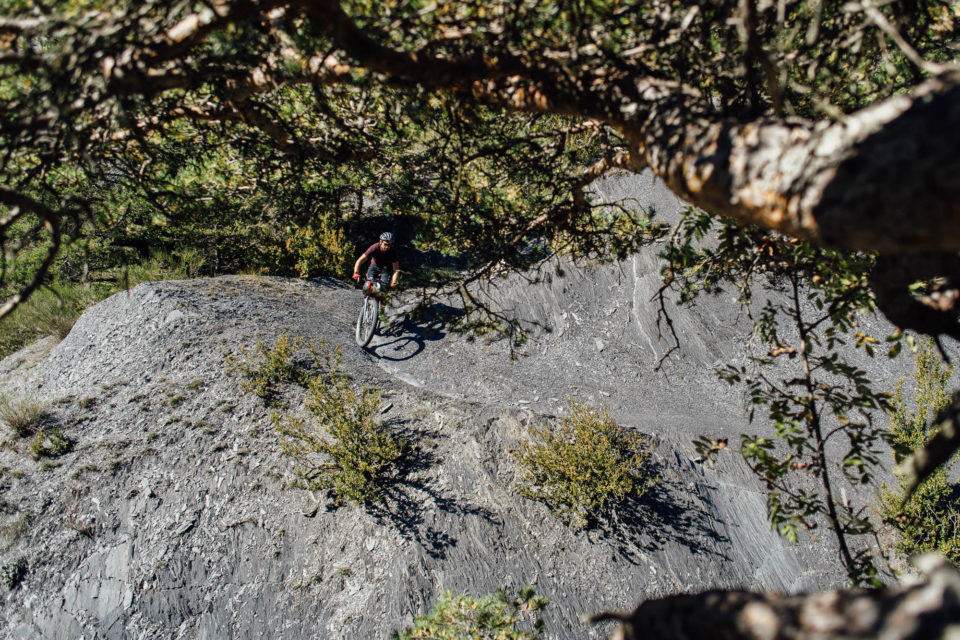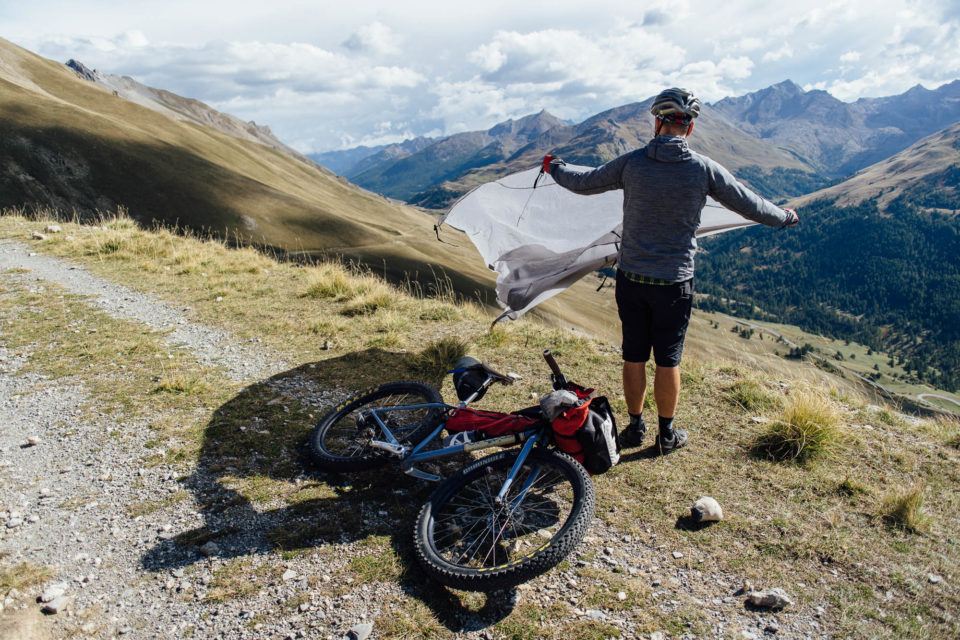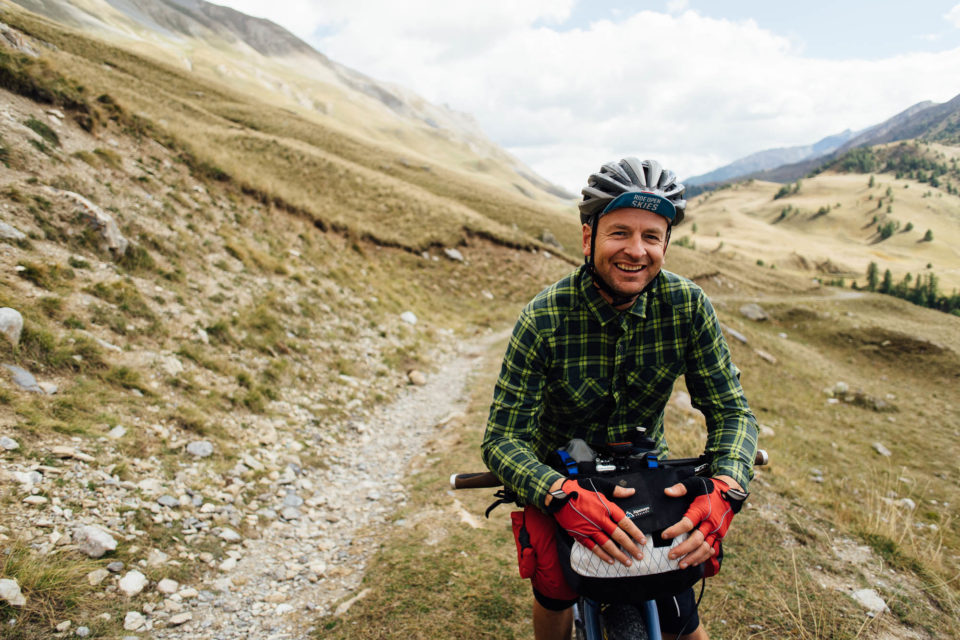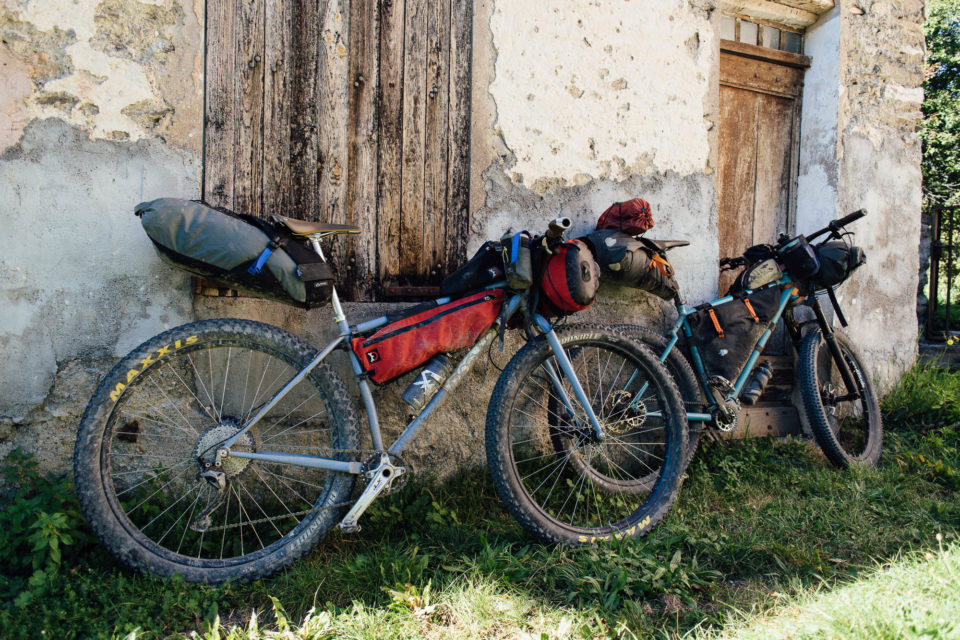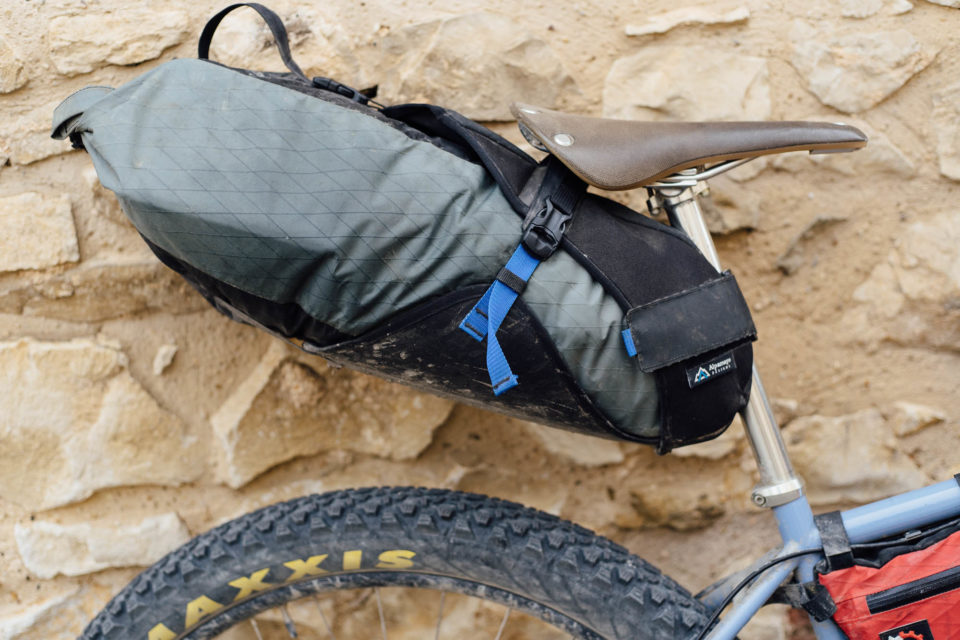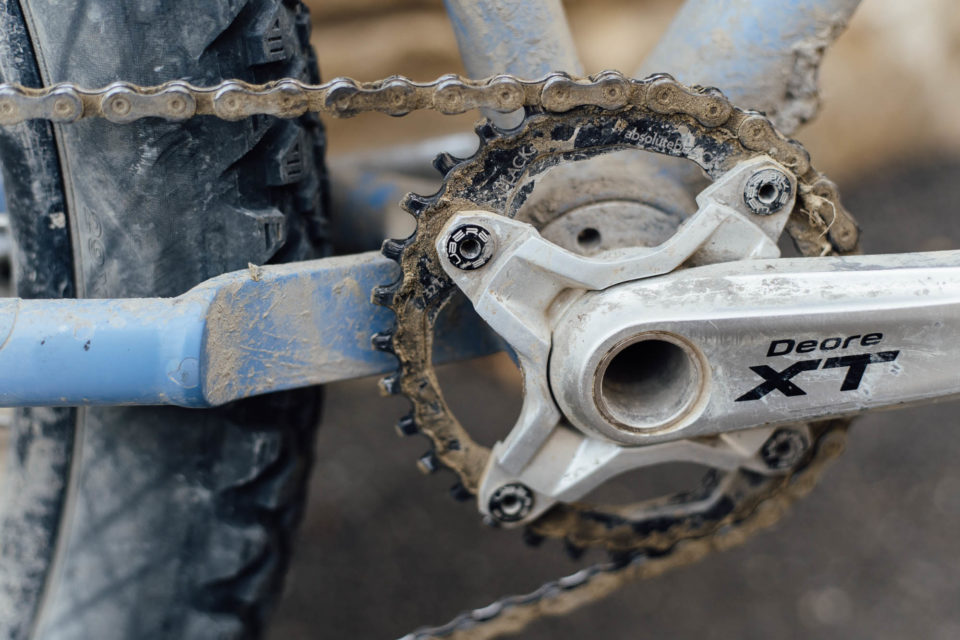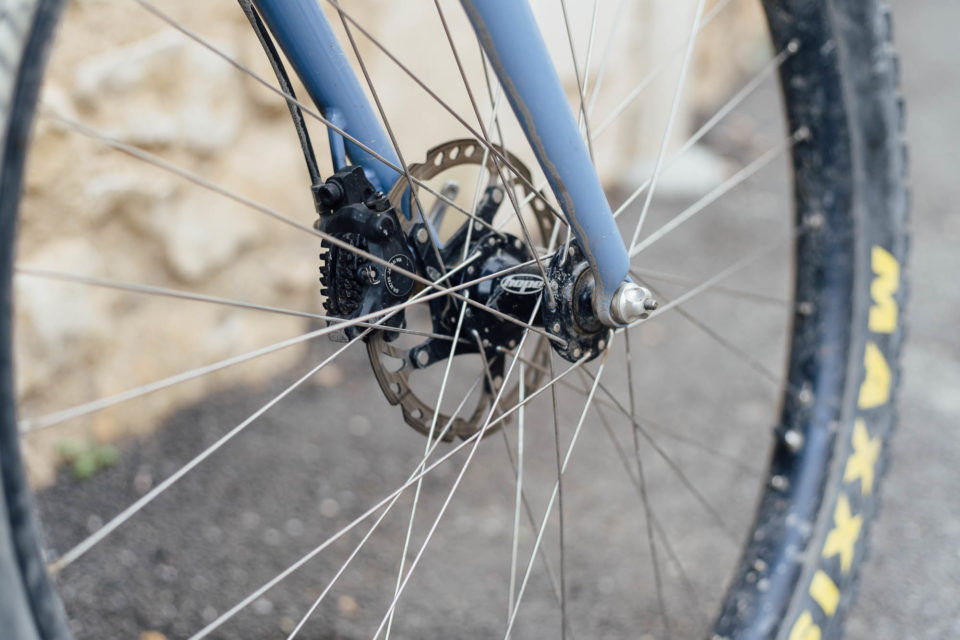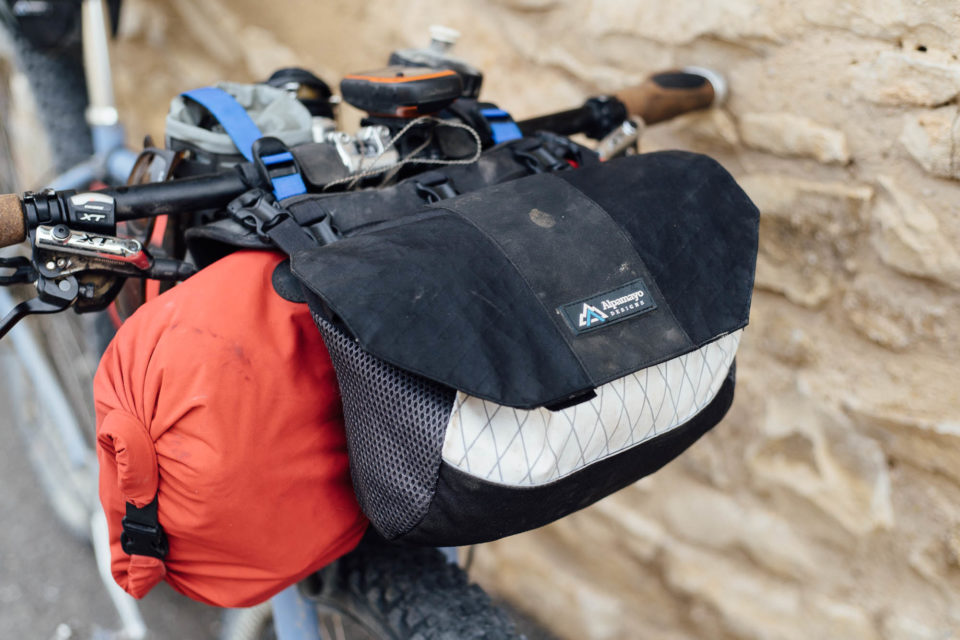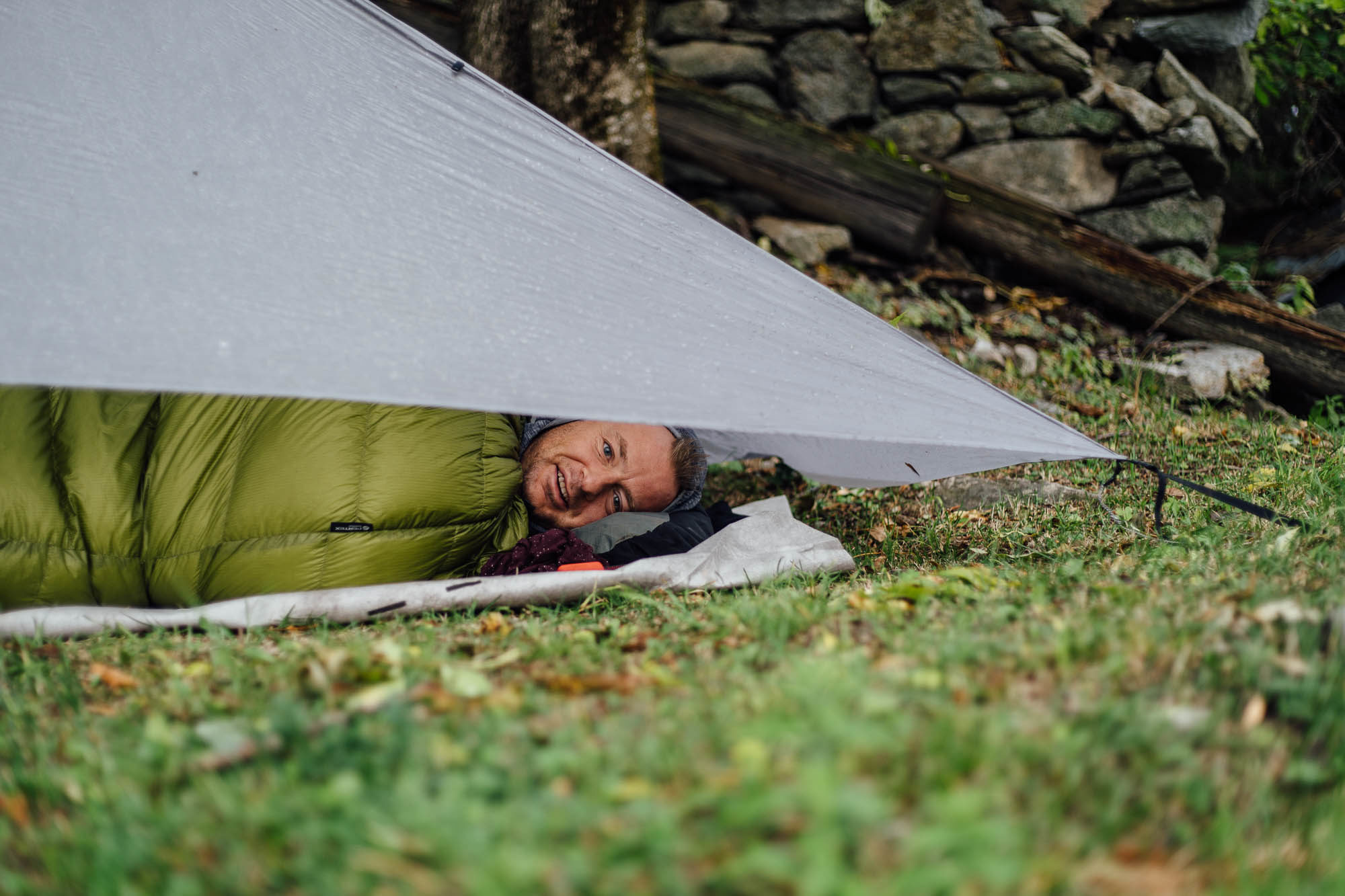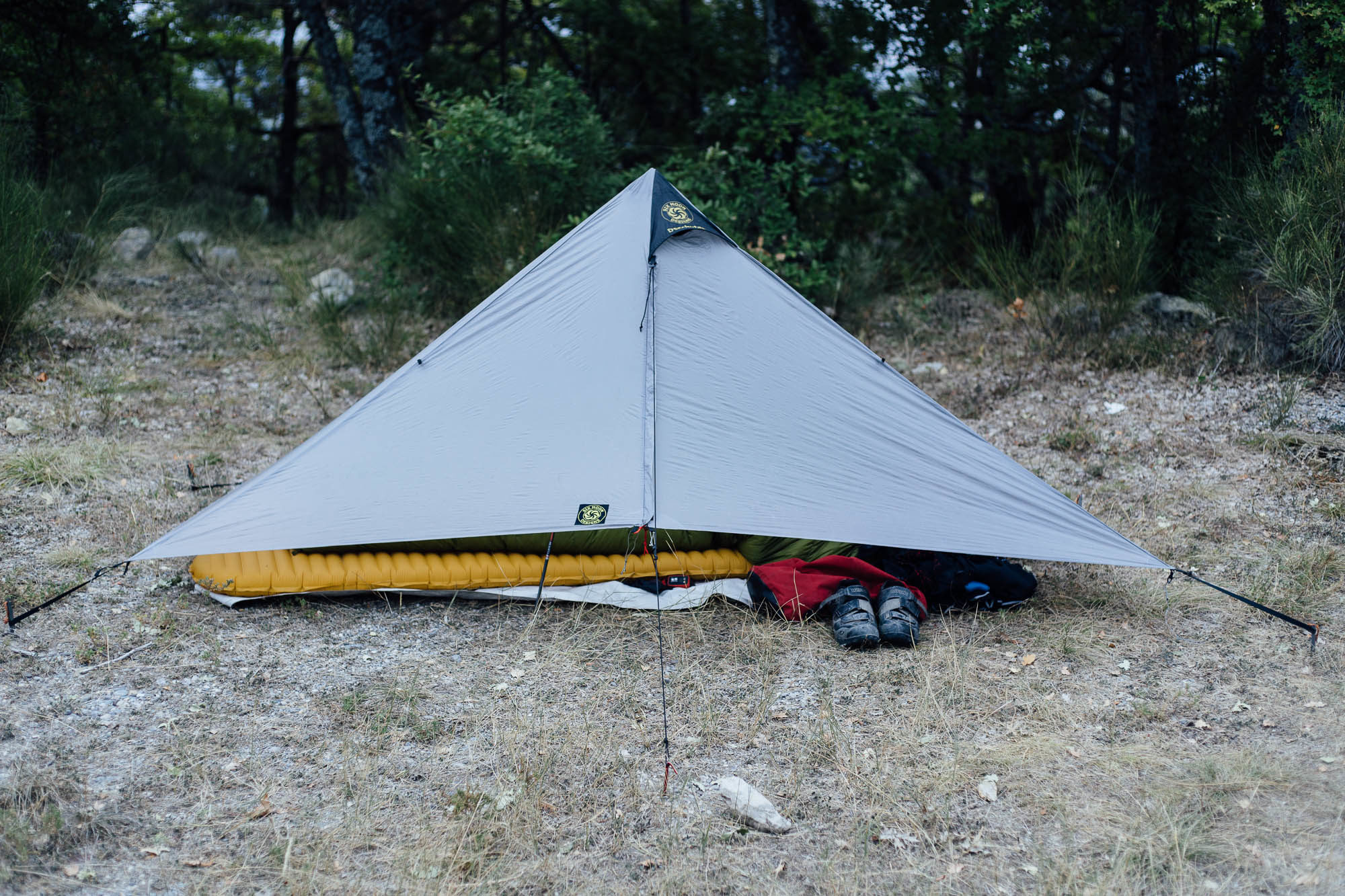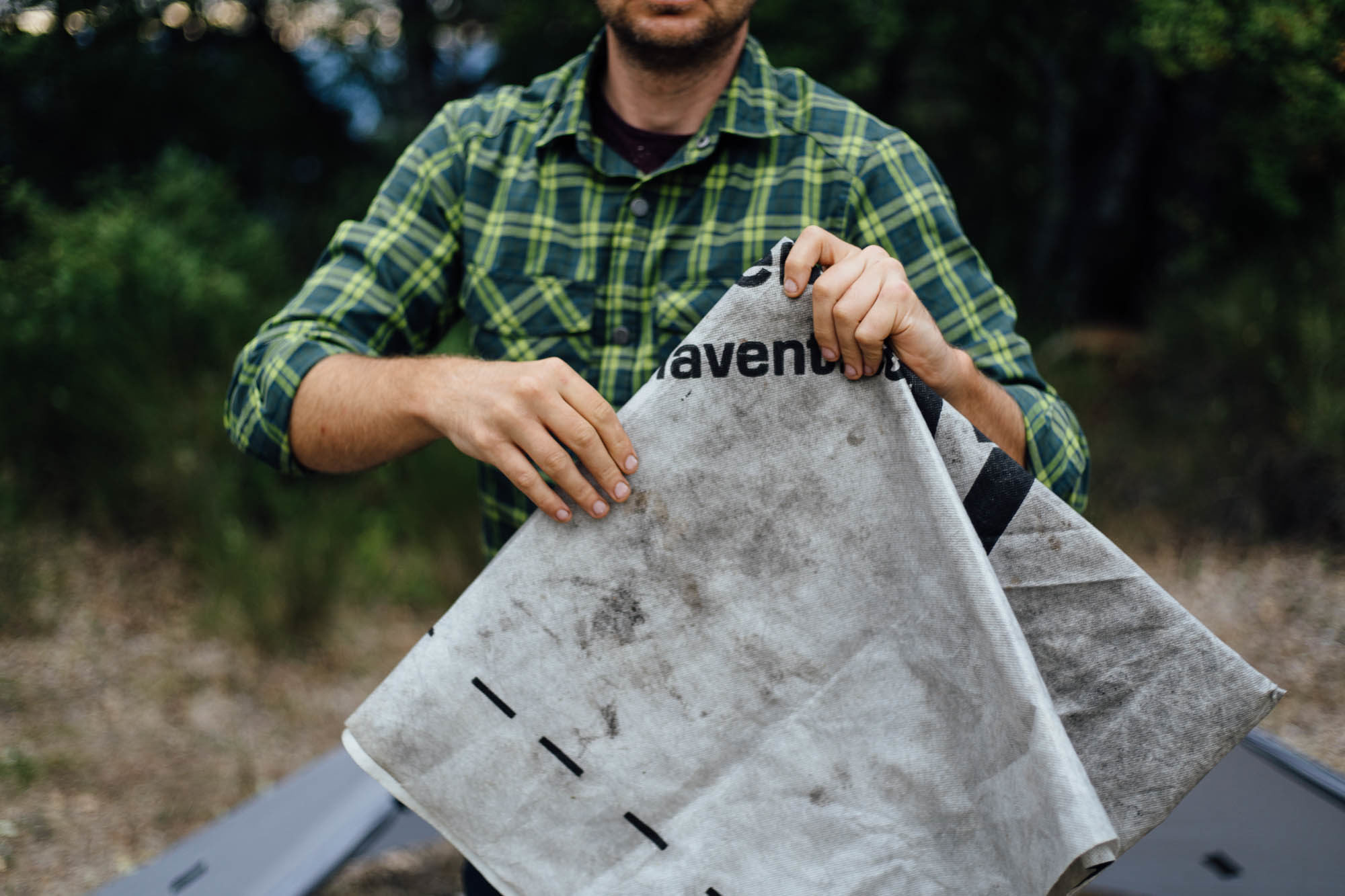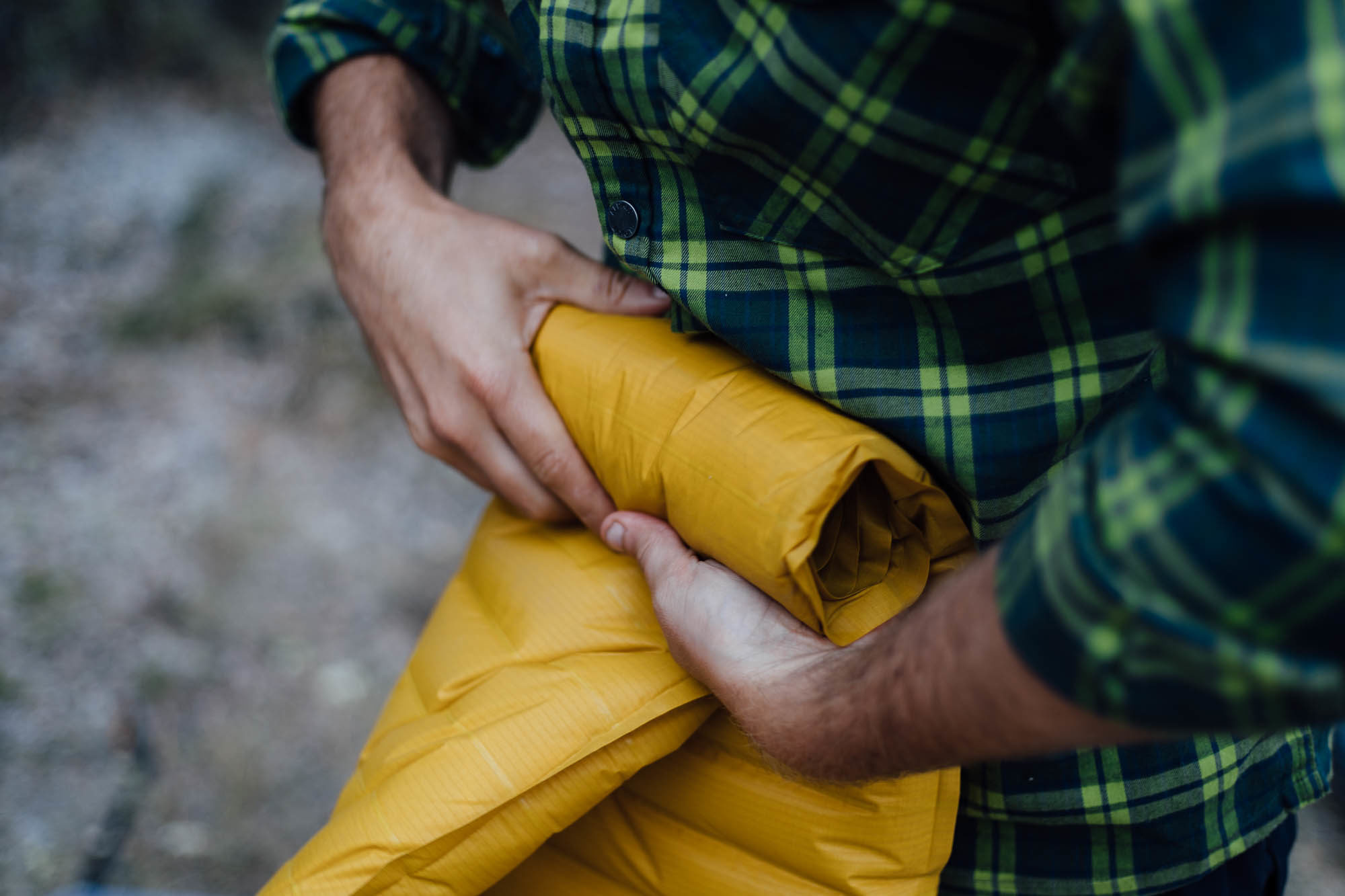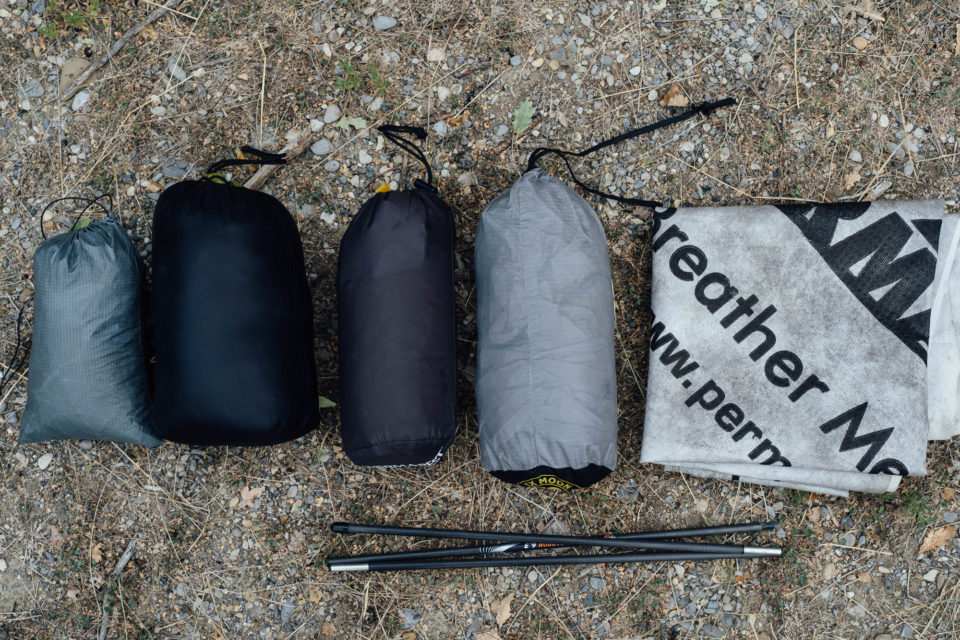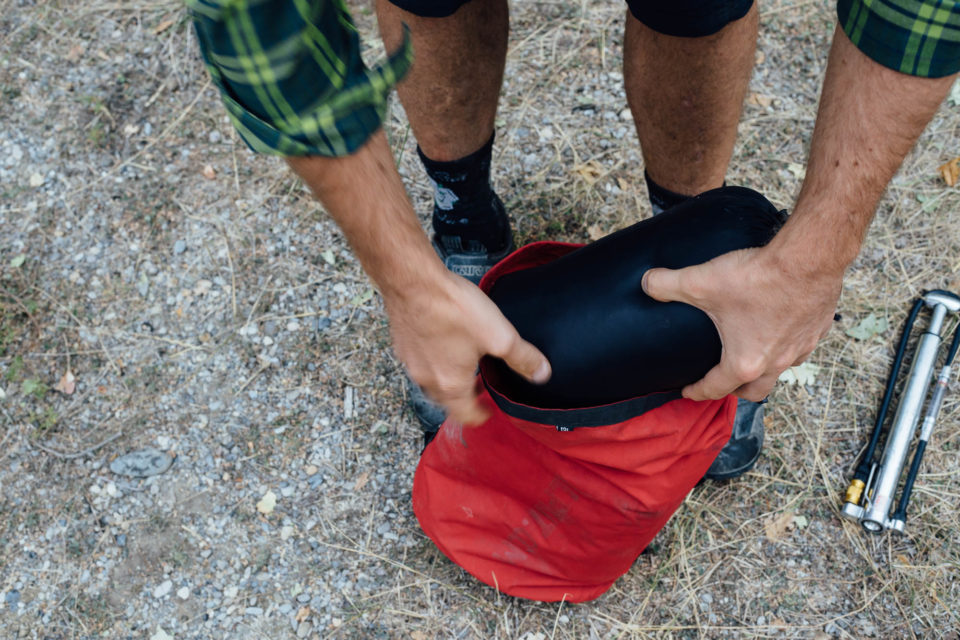Mike Howarth and His Singular Rooster
Share This
Up in the rolling landscapes of France’s magnificent Alpes-de-Haute-Provence, we chat with Yorkshireman Mike Howarth about all things bikepacking: big trips, small trips, fat bikes, thin bikes, n+1, his take on the Great British Bivvy, and his Singular Rooster…
I met Mike Howarth in a bar in Santiago, Chile. He was quickly distinguishable by his bike tan, Yorkshire accent, and easy laugh. We were both headed north, picking our way through South America via the road less travelled, stringing together any dirt tracks we could find along the way.
Our initial “sure, let’s ride together for a couple of weeks” mushroomed into six months of shared adventures, battling icy temperatures and brutal headwinds all the way up to Peru. A true bikepacking bromance. Finding the right travel buddy isn’t always easy, but luckily we shared a passion for riding hard, taking photos, and stopping for afternoon siestas (I even learned to live with Mike’s snoring). Trips like these forge strong friendships and lasting memories, all the more reason to make them happen, if you can.
Since then, we’ve managed to meet up a few times for shorter, more digestible adventures. The latest was a week spent this summer riding France’s Grande Traversée L’Alpes-Provence where I quizzed him on updated thoughts about life, bikes, and more…
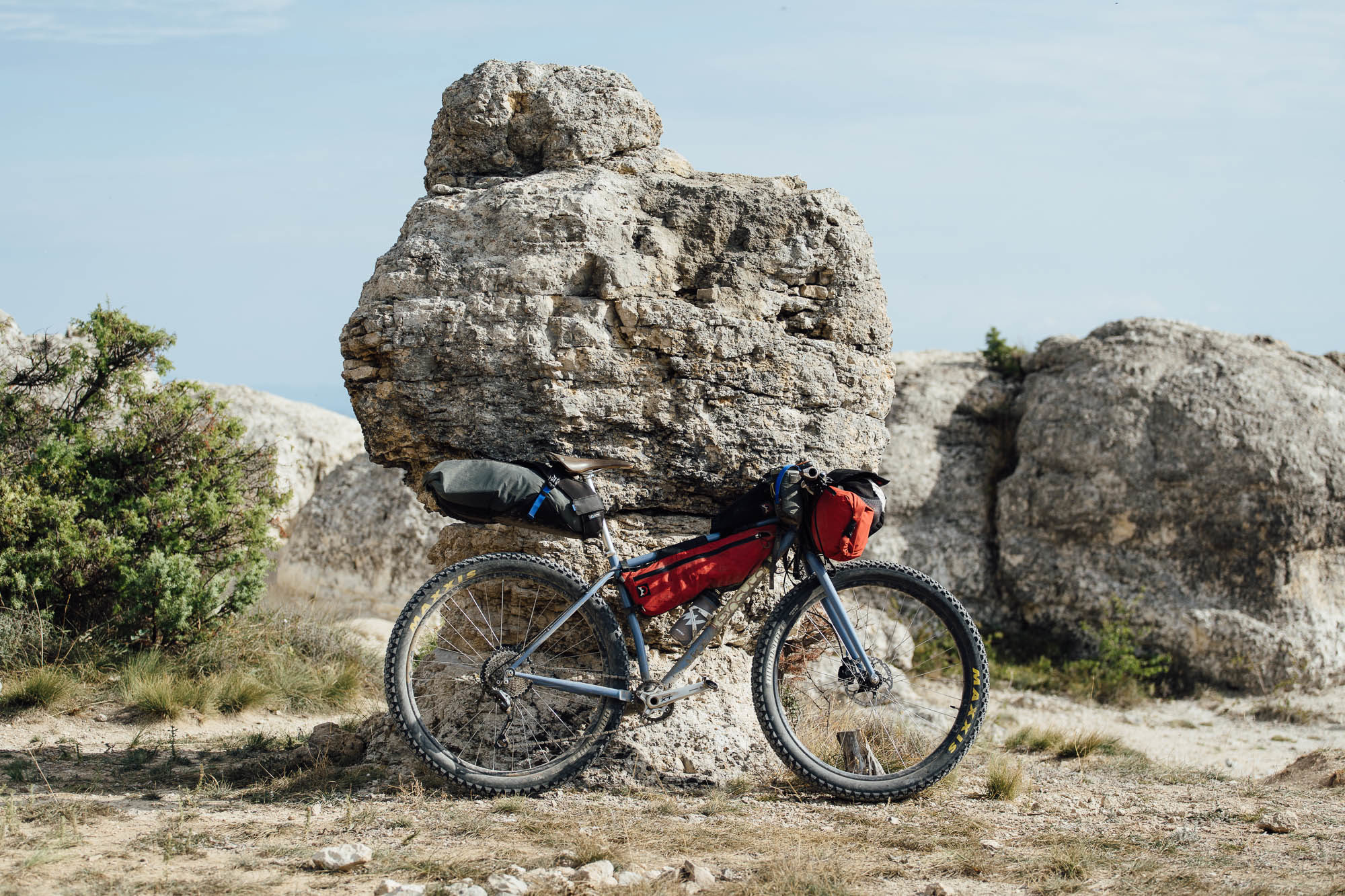
Looks like it’s new bike day for Mike, or at least since we rode together. What was it about the Singular Rooster that caught your eye?
Actually, I scored the Rooster second hand from the Singletrack forum back in 2016. Despite having the bike for the best part of two years, it only got ridden a handful of times in my first year of ownership after a nasty shoulder injury put me out of action.
A couple of years ago, there was a lot of churn in the bike industry as each wheel size went head to head, none more so than the 29+ and 27.5+ platforms, so second hand bikes were popping up all the time, in pretty much any wheel size, as people made the leap from older wheel sizes. 29+ had lost a bit of traction in the market. A bike with standard 9mm axles and some paint damage probably put quite a few people off, but for me the bike was pretty dialed, with a sensibly spec’d XT kit and Velocity Dually rims. My first job was to touch up the bike’s paintwork with some clear coat and helitape, then I went about replacing the main contact points such as the saddle, handlebars, and grips to suit my own tastes. The bike cost me just £600, so it was a deal.
It’s a good looking bike, for sure…
For me, rigid steel bikes just look right. The Rooster is no exception, there is a simplicity to the design that Singular owner and designer Sam Alison has carried through the entire range.
The closer you look, you begin to notice the care and attention that’s gone into the design process. Tidy welds, kinked seat tube, cool head badge, and an eccentric bottom bracket if you want to go single speed or play around with the bottom bracket height. Putting aside aesthetics for a minute, the Rooster is an absolute blast to ride, confidence inspiring and steamrolling in equal measures. It’s staggering to think this bike only found its way into production as a result of a successful Kickstarter campaign. Talk about a brand living and dying by customer feedback!
Sam and Singular Cycles were one of a handful of brands championing weird wheel sizes in the UK long before some of it made its way into the mainstream product lineups we see today. After a bit of a hiatus, it’s nice to see Singular Cycles beginning to gather momentum again, with an impending re-release of their Pegasus, a titanium 29er capable of running 27.5+.
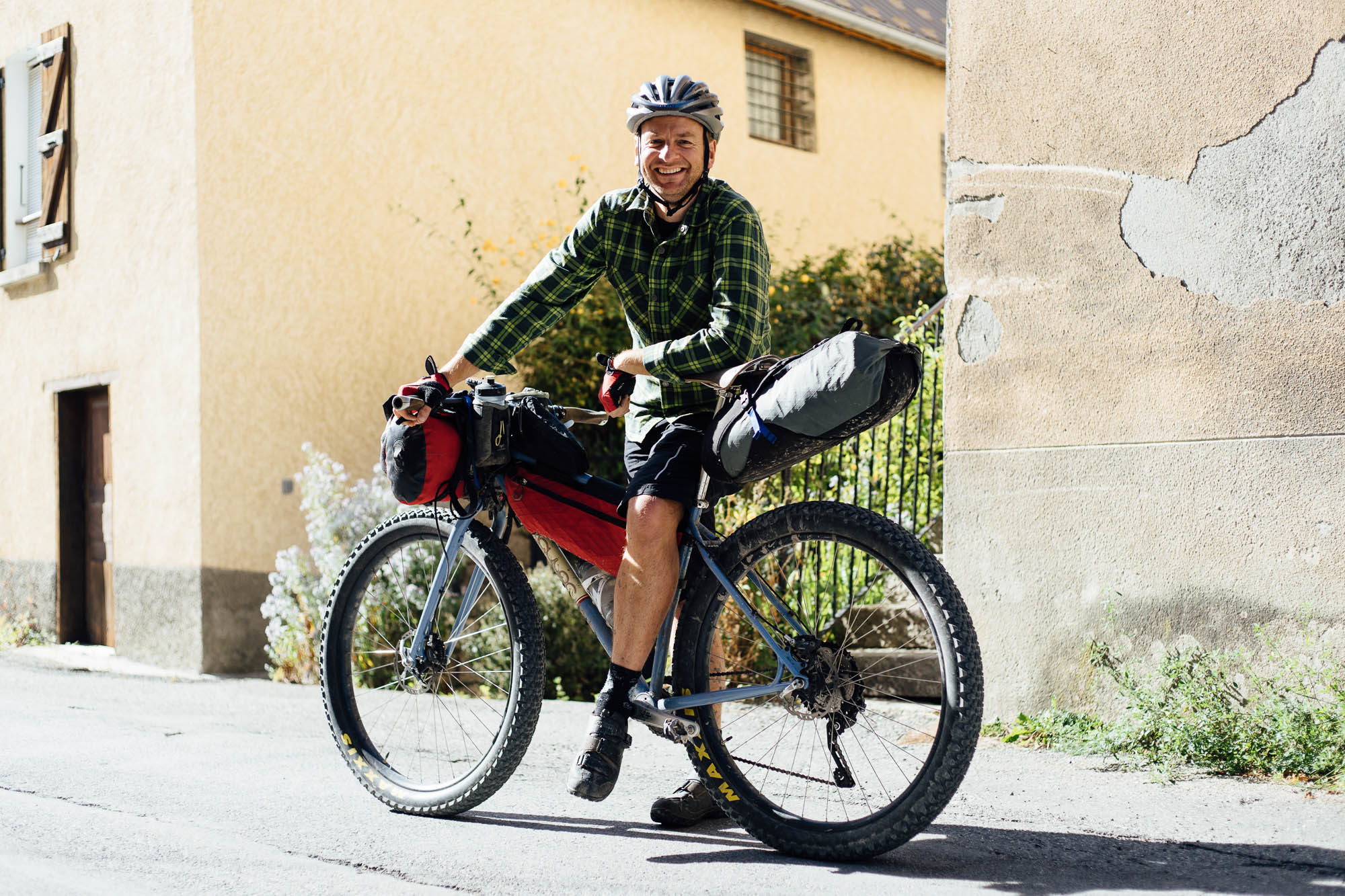
And how did you get where you are, as it were? Tell us about your bike journey, in terms of the bikes you’ve ridden previously.
Uffff…I wouldn’t know where to start, really. My interest in bikes covers everything from mountain biking, road, and mixed terrain riding, so I’ve owned and ridden a lot of bikes along the way.
Strapping stuff to a bike and taking off for a couple of days probably started about the time I owned a Giant Anthem, a great privateer XC race rig. The full-suspension frame lacked a lot of internal frame space, which didn’t really lend itself to bikepacking. And back in 2010 the UK bikepacking scene didn’t really have many people doing custom stuff, other than say Wildcat Gear, who was just starting out.
As the idea for a longer trip began to form, I ended up speaking to the guys at Keep Pedalling in Manchester who helped me build up a Rohloff-equipped Surly Ogre. I took the Ogre to India on a shakedown ride and then rode a good chunk of South America on it. There’s a lot to be said for the rigid steel 29er. In many ways, it reminded me of some of the early mountain bikes I rode. It was so simple and was virtually maintenance free thanks to the Rohloff. The only real downside was the lack of volume in the tyres. At that time I hadn’t quite made the leap to tubeless, and I was getting pretty beat up on some of the rougher ripio roads in northern Argentina and Bolivia. And once you’ve had a tyre riddled with goatheads, tubeless begins to make even more sense.
Part way through the trip I swapped bikes with Andi, a friend from Germany who had come out to ride with me and Cass in Bolivia. He went home with my Ogre – which he’s still riding today – and I ended up continuing north on the Surly Pugsley he’d built. The Pugs was super well specced: Rohloff, SON Dynamo, tubeless, and obviously big volume tyres. It was a lot of fun to ride. It helped open up a lot of riding, and to me it brought to life the very concept of the all terrain bike. It’s the ATB bike we were promised in the 80s!
One thing’s for sure, though: for all its redeeming features, the Pugs tips the scales toward the portlier side of bikes, and once back in the UK I began to notice this more and more. The continent crushing, Andean pass storming adventures we shared together were soon forgotten as my riding became quick after-work blasts in fading daylight. With a bit of cash back in my pocket, I went through an n+1 phase, adding a 29er with front suspension, another road bike, and a cyclocross bike.
Before I knew it, I had seven or eight bikes in the garage. With that many bikes, it was nearly a full time job keeping on top of the maintenance, and it was beginning to overshadow what little riding time I had. Over time, I began to whittle down my bike collection, selling a bike here and there, shaping it around the riding I liked rather than being led by the latest industry trend.
I had been thinking about going down the plus bike route when the Rooster popped up on Singletrack. I knew I liked the way 29er wheels roll. That feeling of momentum combined with the comfort of a large volume tyre was the perfect compromise between the 29er and my fat bike.
…I’ve made a conscious decision to try and re-address that balance, setting clear boundaries between work and life, and building more play into my life. Psychologists called it psychological detachment from work. Many of us just call it getting out and riding your bike.”
Sounds like you escaped the Matrix for a good chunk of time. What work do you do now? Any thoughts on the best ways to balance work and play?
Yeah, I guess you could say that, two and a half years out of the office is pretty respectable by most people’s standards.
Back in the real world, I work as an IT consultant, helping businesses with digital transformation initiatives. For a good while, I’d say that the balance was more in the favour of work than play. I found myself falling into the trap of being ‘always on’ as work began to creep further and further into my time outside of the office.
Over the last 12 months, I’ve made a conscious decision to try to re-address that balance, setting clear boundaries between work and life, and building more play into my life. Psychologists called it psychological detachment from work. Many of us just call it getting out and riding your bike. It also helps to have a supportive and tolerant partner who gets your need to disappear on a bike for a few hours, plus a set of mates around you who nail you down to trips away and force you to get out of the house, even when the British weather might not be favourable (read: raining). Despite social media having its downsides, it’s been a great way to connect with like-minded people and meet up around the country.
Time is a premium for most people. What rides/events have you completed in the last couple of years to satisfy your bikepacking fix?
Time is most definitely at a premium. In many ways it would be more revealing to list the events I didn’t make the start of due to work commitments over the last couple of years.
Over time, I’ve reconciled that I’m less motivated to ride in big, organised events. Instead, I’ve tended to favour opportunistic trips, fitting things into a weekend or S24O adventure based around a mate’s availability or a good weather forecast.
Aside from the stack of social and DIY rides I’ve planned around certain areas or places I’ve been motivated to ride, some of my favourite trips over recent years have included:
- Capital Trail
- Pennine Bridleway
- Peak 200
- South Lakes 200
- Trans Cambrian Way
- Grande Traversée L’Alpes-Provence
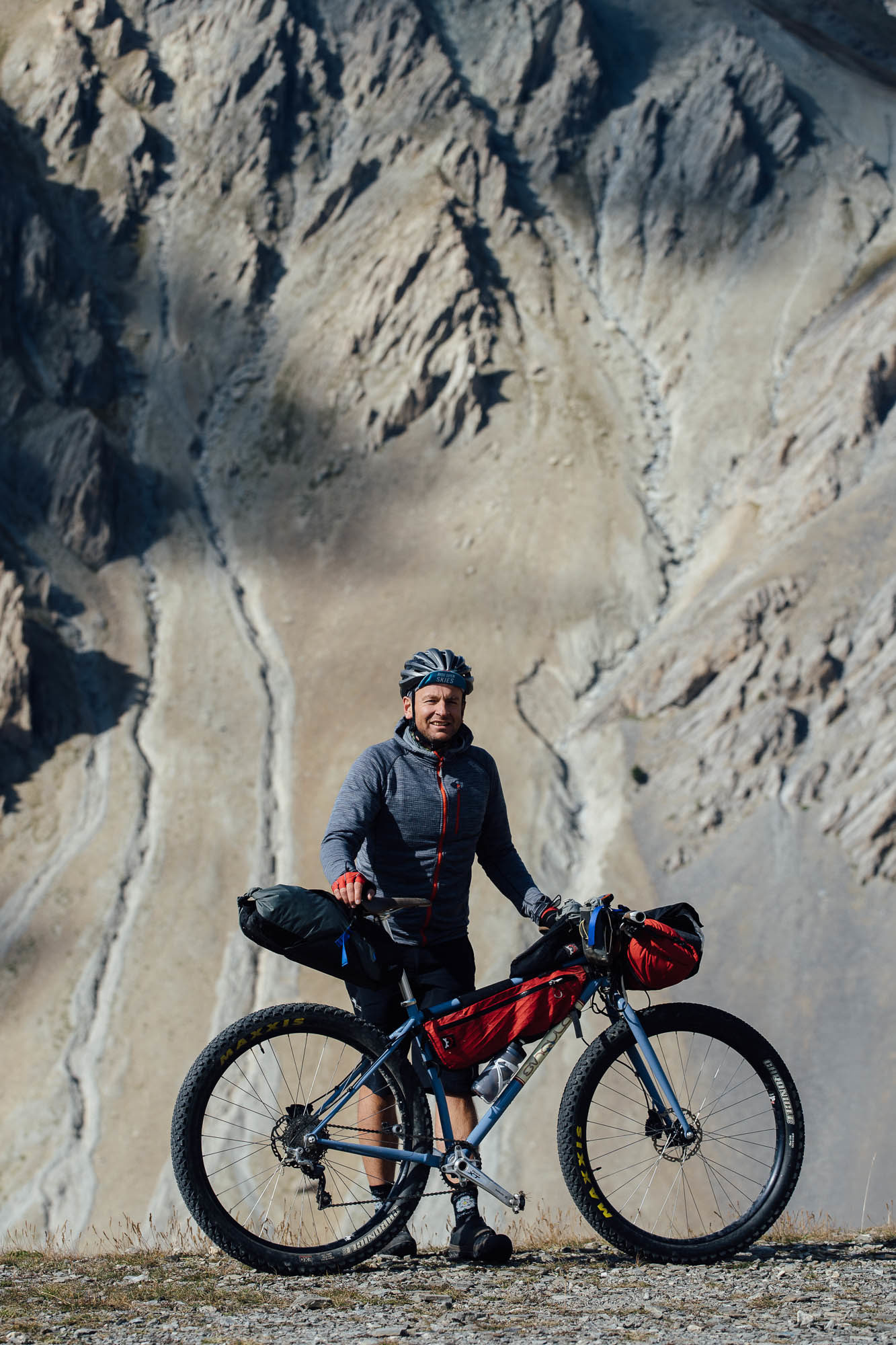
It’s best described as a weekend of solid type 2 fun. I got schooled in the dark art of riding gravel bikes across everything imaginable, from roads, trails, and XC ski tracks. It was brutal, but it emphasised to me what a great bike should be. It should be a tool for a job, something to plan rides around.”
Taking these thoughts into account (and as awesome as big tyres can be), gravel bikes seem optimal, in some ways, for where you live, in terms of covering ground and making the most of limited time away…
Growing up in West Yorkshire, I’d become spoilt with a tonne of great mountain biking straight out of my back door, courtesy of the Pennines. In contrast, Cheshire is one of the flattest places in the UK, and has a pretty limited set of trails and bridleways thanks to its geography and wide swaths of agricultural land.
For the first six months of living in Cheshire, I found myself throwing a bike in the car and driving out to Wales, the Peak District, or back home to go and ride with mates. Not only did it add a couple of hours to a day’s riding, it completely grated against my idea of riding and the freedom a bike should give you. About the same time, my friend Paul Errington – who developed the Dirty Reiver, the UK’s first dedicated gravel event – invited me out to Switzerland to go and ride the TorTour Cyclocross race, a gravel event held in the depths of winter.
It’s best described as a weekend of solid type 2 fun. I got schooled in the dark art of riding gravel bikes across everything imaginable, from roads, trails, and XC ski tracks. It was brutal, but it emphasised to me what a great bike should be. It should be a tool for a job, something to plan rides around. And that’s precisely what owning a gravel bike has been about for me, every ride has started from my doorstep. With each ride, I’ve got to know the local area better, building up my knowledge of back roads, trails, and bridleways.
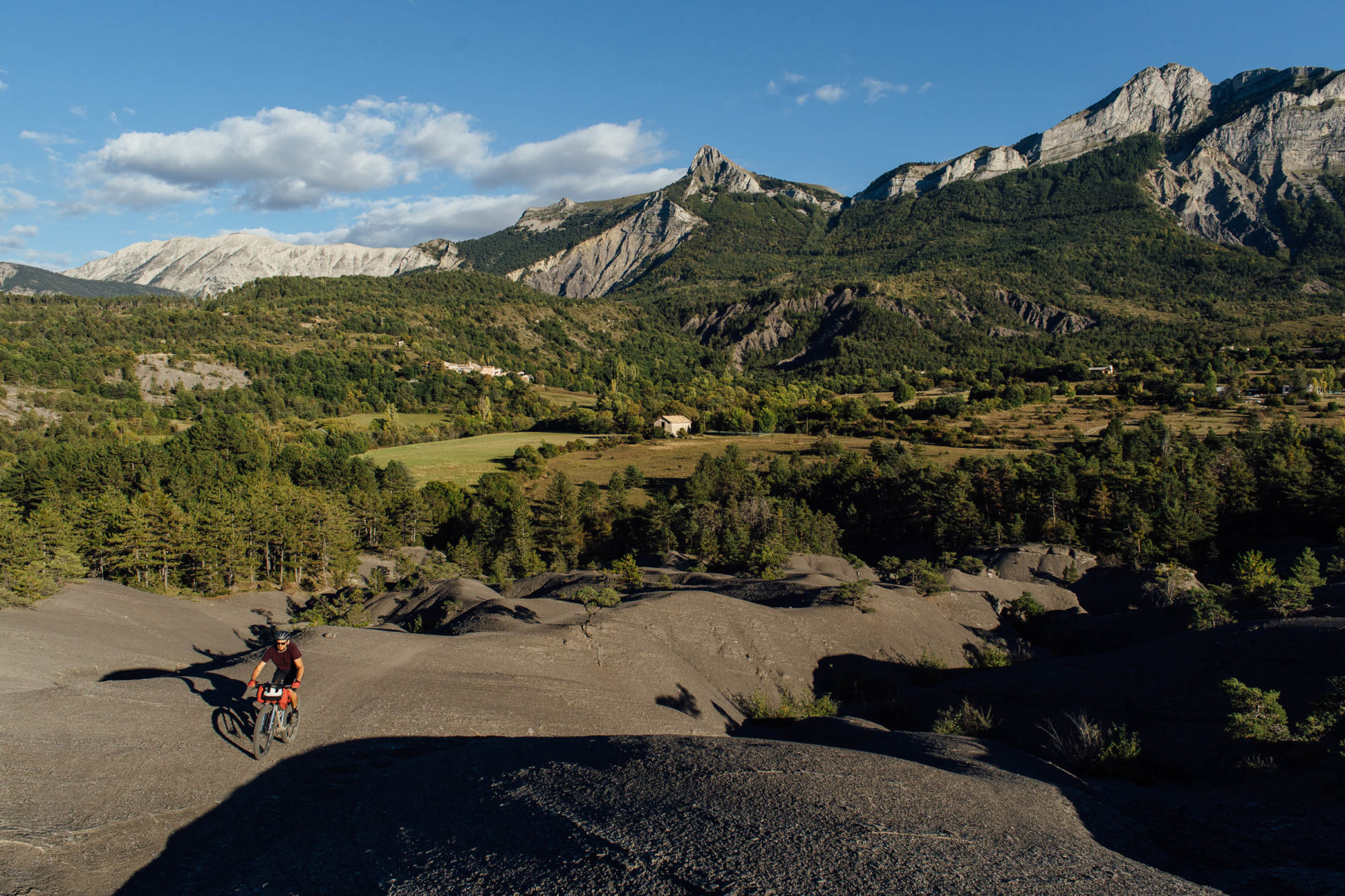
Any trips/destinations in the pipeline? Do you think you’ll ever get out for a multi-year trip again, or are you happy with shorter adventures?
In all honesty, my trip through India and South America never set out to be a multi-year trip. I set off with a very clear 12-month plan, but as the trip unfolded, I found my budget went further than I’d planned. I decided to keep going until my money ran out or I stopped finding joy in what I was doing. Even today I still find the scale of that trip mind-boggling.
Whilst I’d never rule out a multi-year trip again, in some respects, I feel I’ve been through that rite of passage. As extended solo travel goes, I’m comfortable in my own company, and as I get a bit older I’ve got less to prove to myself and more of a desire to share the highs and lows of a trip with someone else. Besides, there are tonnes of cool people all over social media riding in interesting places, so I’m happy to vicariously through their trips.
Where I am at right now, shorter trips are way more appealing, zoning in on a particular area and getting to know it more intimately rather than setting my sights on another continent. For me, the European Alps are still pretty unexplored, having just returned from riding the Grande Traversée L’Alpes-Provence, I’m already super motivated me to get back out to the Mercantour and Maritime Alps again next year to piece together some more trails. Plus, the shine suns more than in England! Further afield, Central Asia, New Zealand, and Japan are still high on my list, but they might have to wait for a while.
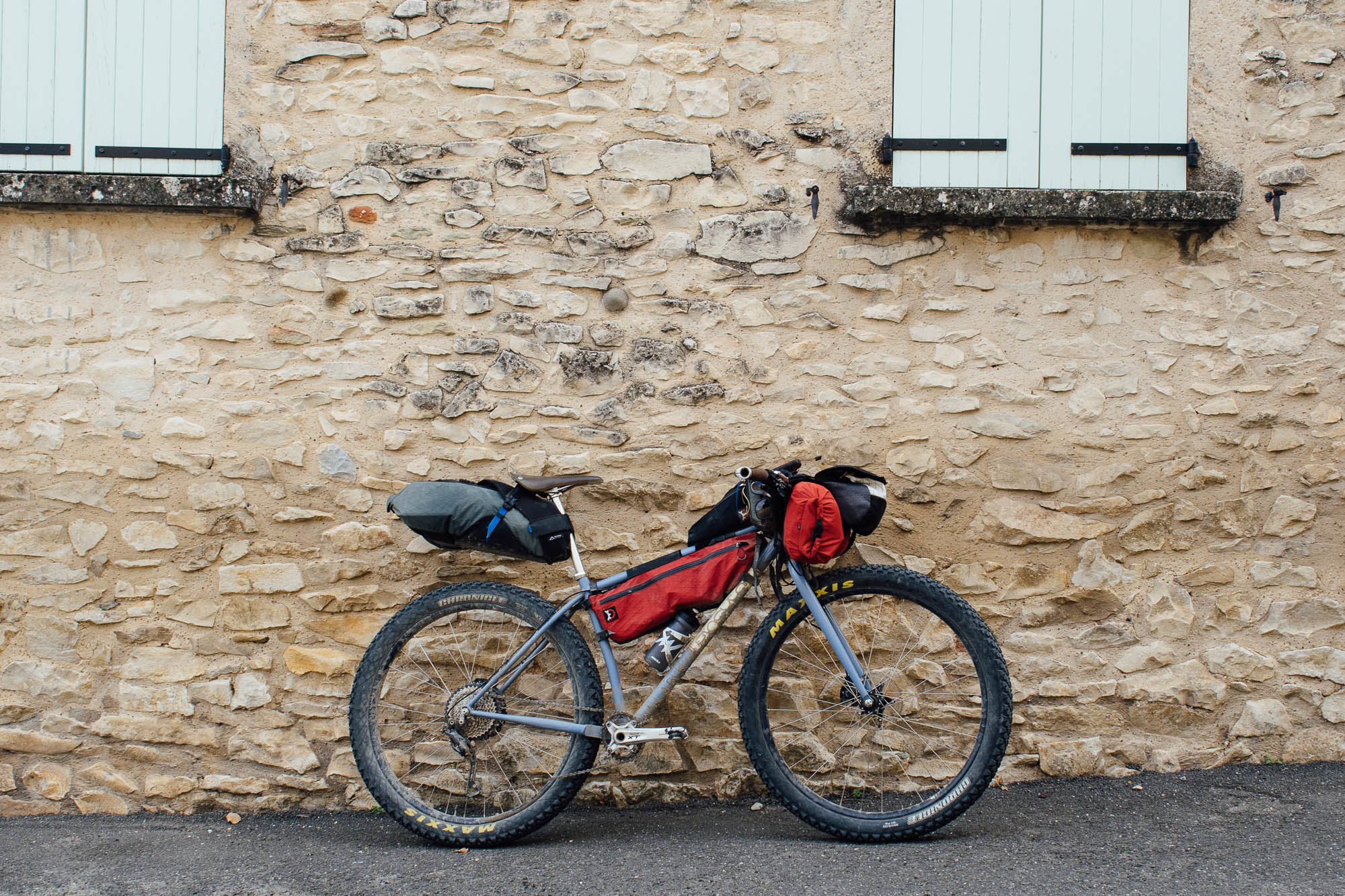
You kept a blog while you were away and put together an enviable collection of pictures. Talk us through the importance of capturing images on your journeys and what you use to do so.
My interest in photography goes back a long way, maybe 10 years or more. In the early days, I was overly focussed on the technical stuff. You know, ISO, aperture, F-stops. It’s laughable now, but I was more concerned then about whether the shot was exposed correctly than what I was trying to convey in the image.
I noticed a real step change in my photography came when I switched over to the Micro Four Thirds format. The camera body and lenses were that much more compact that I began taking my camera with me more and more. With more time in front of a camera, I started to gain more confidence in my photography, to the point where a blog seemed like a great way to share my travels with friends and family. I’ve remained loyal to the Micro Four Thirds format for years now. The early Micro Four Thirds cameras were on the slow side and lacked a decent range of lenses, but brands like Olympus have done a lot to really push the Micro Four Thirds standard. The Olympus EM-5’s small form factor and in-built image stabilisation was the system’s major selling factor for me.
Initially, lenses were generally limited to fast prime lenses, but over time Olympus has started to release a number of fast zoom lenses in their pro range. If only the price tags were a bit more palatable! My current camera is an Olympus EM-5 Mk 2. As for lenses, I have an Olympus 17mm f1.8, Olympus 9-18mm f4.0-5.6, and Olympus 40-150 PRO f2.8.
Mike’s Rooster Build Highlights
- FRAME & FORK: Singular Rooster
- HEADSET: Hope
- HANDLEBAR: Salsa Bend 2 Bar
- STEM: On One Corto Stem
- SEATPOST: Thomson Elite
- SADDLE: Brooks Cambium
- GRIPS: Ergon GP1 Biokork
- CRANKS: Shimano XT
- PEDALS: Shimano XT M8000 SPD
- BOTTOM BRACKET: Eccentric Bottom Bracket
- CHAINRING: Absolute Black 30T Oval
- CASSETTE: Shimano 11-42 (10 Speed)
- SHIFTER: Shimano XT
- REAR DERAILLEUR: Shimano XT
- BRAKES: Shimano XT
- ROTORS: Shimano XT
- RIMS: Velocity Dually
- HUBS: Hope Pro
- TIRES: Maxxis Chronicle
Bikepacking Bags
- Handlebar Bag: Alpamayo Designs Front Harness
- Frame Bag: Revelate Tangle
- Saddle Bag: Alpamayo Designs Saddle Bag
- Others: Revelate Designs Gas Tank, Apidura Backcountry Pouch
The Brits love their bivy bags and tarps. Talk us through your somewhat luxurious, minimal tarp system.
Yeah, I guess they do. Ronald Turnbull and Alastair Humphreys have done a lot to sing the praises of the humble bivvy bag over the last 10 years or so.
Like many Brits, I started off bivvying using an Alpkit Hunka. At that time, bivvying was still a pretty novel concept to me, and was something reserved for summer months with a good forecast. Coming back to the UK after my trip, I felt I’d gained a lot of experience and gear knowledge, and with that comes a certain amount of confidence in terms of pushing gear a bit further, especially on shorter trips.
Each trip, I end up scribbling notes of stuff I don’t like or needs improvement. It’s good to do it whilst it’s fresh in your mind and bugging you, otherwise you tend to forget until the next time the same thing bugs you again. Over time, you make a few tweaks here and there and you begin to develop a series of systems that work for your own style of travel. That’s very much how this sleeping and shelter system evolved.
After a couple of cold and wet nights in a bivvy bag, a tarp was the next logical upgrade. While flat tarps get a lot of love, I wanted something that offered a bit more protection with a view to using a bivvy and tarp predominantly in the UK, so it made sense to go for a closed mid-style tarp like the Six Moon Designs Deschutes.
Next up, I swapped out an old PHD Designs Minim sleeping bag for a Cumulus 250 quilt. I’d picked up the Minim in a sample sale years ago, but it never really lived up to its temperature rating. Despite near identical specs, the quilt was an immediate boost in warmth, and it shaved a couple of hundred grams and freed up a bit of pack space as well. Paired with a Tyvek groundsheet and Thermarest Neoair, I’d arrived at a pretty dialled system that just about fit into an Alpkit Airlok 13l dry bag. Last year I swapped out the Alpkit Hunka with a Borah Gear Ultralight Bivvy, and again it shaved off a couple of hundred grams and gained a bit more pack space. The major motivation was the integrated bug net in the bivvy bag, which came into its own over the summer months.
The beauty of this type of system is that it’s way more modular than a tent. I can pair things right back in the summer to just the sleeping bag and bivy, or combine everything together for winter UK trips, or summer alpine trips just as I did in Provence. It all packs down into a nice, neat, compact system, and lightens up the front end of the bike, which offsets some of the weight from the camera gear I carry.
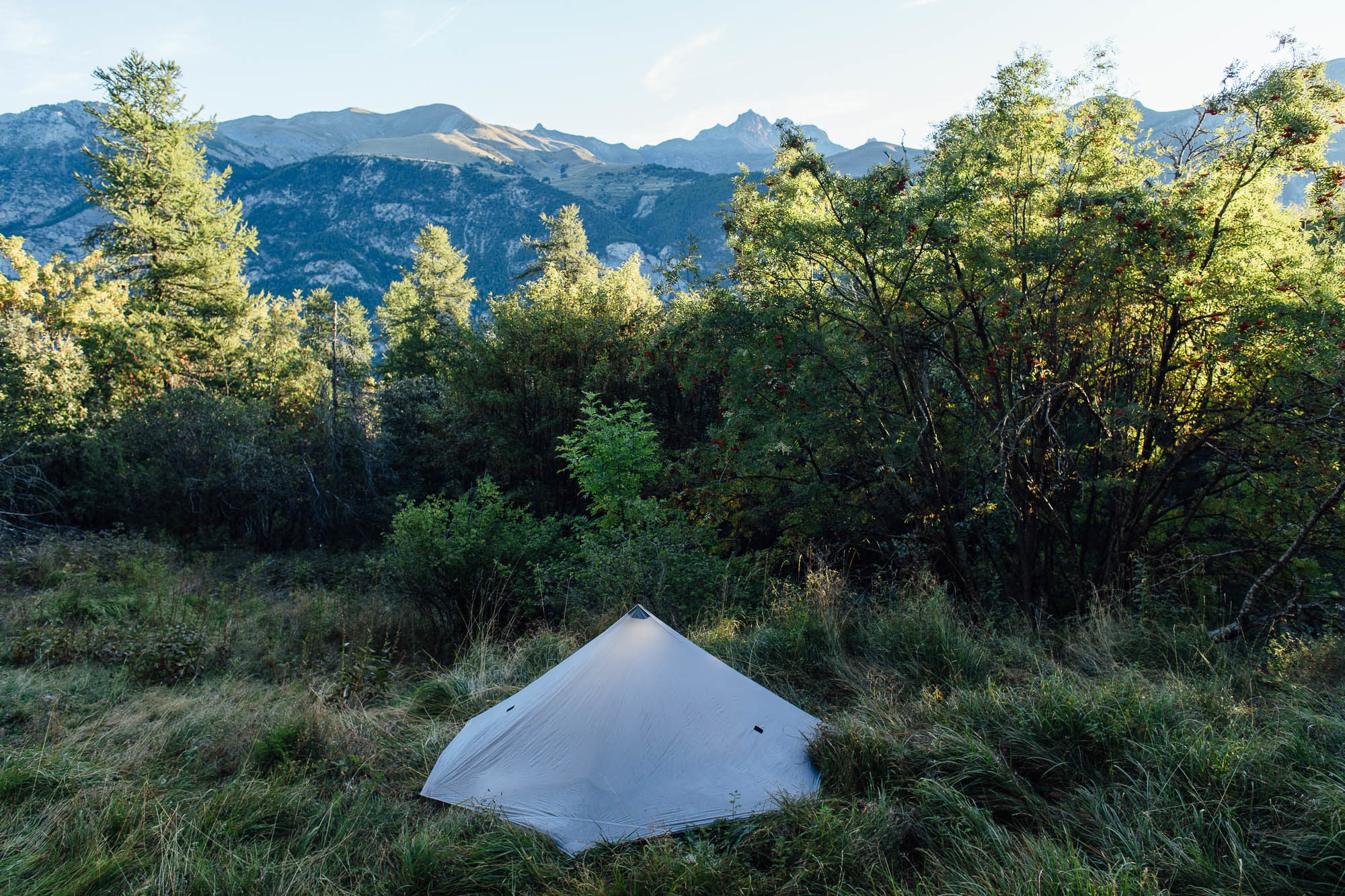
You can find out more about Mike’s adventures by following along with his Instagram feed, @MikeHowarth. Better still, drop him a line when you’re in his neighbourhood. He’s always up for a ride! For details on the route we followed, see our Route Guide.
Please keep the conversation civil, constructive, and inclusive, or your comment will be removed.













